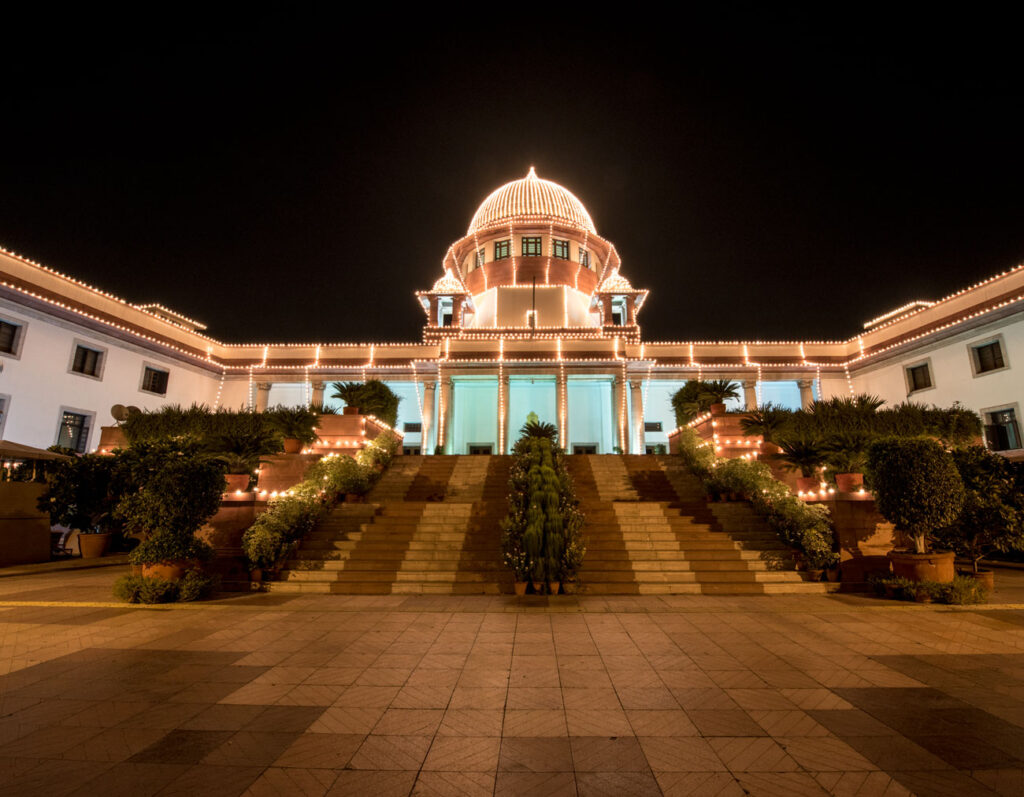New Delhi, March 17.
A CJI led Supreme Court bench on Friday rejected a plea to take over through a judicial order the foreign correspondents’ club on Bhagwandas Road for constructing more chamber blocks for lawyers and instead suggested a dialogue with the government on the administrative side.
The court will pass formal orders in the case later. The top court had earlier taken over the two-decades old Appu Ghar to construct a Supreme Court annexe through a court order.
The annexe has been built in over 12 acres of land for a whopping cost, but lawyers are unhappy that they have got only a few chamber blocks in the annexe.
The Supreme Court Bar Association, spearheaded by senior advocate Vikas Singh has since been demanding more land to construct more lawyers’ chambers. But the top court is now chary of doing it again.
Chief Justice of India D.Y. Chandrachud had locked horns on this issue with the SCBA chief over his persistent demands that the issue be heard by the top court on the judicial side. Eventually, the CJI set up a constitution bench and heard his plea in open court today.
Singh argued that lawyers as a class do not get to be part of any dialogue that goes on between the court administration and the government on the issue and insisted on a judicial hearing. “I am only interested in beginning a dialogue,” he said.
CJI Chandrachud and the other members of the bench – were reluctant to press on with the hearing on the judicial side.
“We can’t take over the foreign correspondents’ club on the judicial side to build lawyers’ chambers,” the bench said after the SCBA president claimed that the club had been allotted an alternate site to build its own and the space had not been earmarked for anything else.
It also got government permission to build a new chamber block in front of the court building in the area known as dhobi ghat. This is apart from the new and old lawyers’ chambers that exist within the court compound and outside, next to the ILI building.
“We can talk with the government on the administrative side,” the CJI said. He referred to the recent instance in which the government had sanctioned a Rs 7000 cr demand by the top court for its e-courts mission.
The government accepted our demand, he said, suggesting that the matter be resolved on the administrative side. Singh insisted that this keeps lawyers effectively out of the decision-making process but the bench did not yield.
The main block of the top court building was built over 17 acres. The building was designed by Chief architect Ganesh Bhikaji Deolalikar, the first Indian to head CPWD, in the Indo-British architectural style. The iconic building is listed as a modern heritage building by the Delhi Urban Commission.
It is yet to complete 75 years and hence doesn’t qualify to be a protected heritage building. As a result, haphazard constructions have crept in over the years.
The old building also suffers from lack of maintenance with most parts in disuse or being misused except for the court-rooms and the judges’ chambers.
In response to the lack of space, the court administration recently built the new annexe. But that hasn’t solved the problem as it is a disconnected unit from the old building.
Though most functions are now held there, Singh complained today that he didn’t know where to take a foreign dignitary who had come visiting.
We need to think of all this, he said, suggesting smarter complexes for lawyer. CJI Chandrachud then spoke of the need to construct a new “futuristic” Supreme Court which would stand the test of time.
Old-timers claim that the first CJI of post-independent era was offered a huge land chunk to build a large complex, but settled for a small iconic compact building.
The population pressure has since forced the court to repeatedly build new complexes for the court and lawyers but that hasn’t kept pace with the demand. There have also been demands for building a Supreme Court vista along the lines of the central vista.
Conservative elements, however, insist that the old building and the museum represent the heart and soul of the court and can’t be replaced. The top court is not alone in dealing with this headache.
The Bombay High Court is also housed in a heritage building which is falling apart due to lack of maintenance and is in a bind on whether to shift or not.

